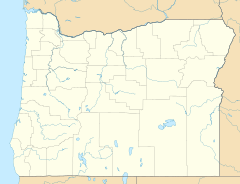Greenback, Oregon facts for kids
Quick facts for kids
Greenback, Oregon
|
|
|---|---|
| Country | United States |
| State | Oregon |
| County | Josephine |
| Elevation | 1,903 ft (580 m) |
| Time zone | UTC-8 (Pacific (PST)) |
| • Summer (DST) | UTC-7 (PDT) |
| ZIP codes |
97497
|
| GNIS feature ID | 1134142 |
Greenback is a fascinating ghost town in Josephine County, Oregon. It was once a busy mining town where people searched for gold. Today, it stands as a quiet reminder of Oregon's rich mining past.
What is a Ghost Town?
A ghost town is a place that was once a lively community but is now mostly deserted. People usually leave because the main reason for the town's existence, like a mine or a factory, closed down. Greenback became a ghost town after its gold mine stopped operating.
The Story of Greenback Mine
Greenback was named after the famous Greenback Mine. This mine was known for its rich deposits of gold and quartz. It was once considered the most productive mine in Oregon based on the length of its underground tunnels.
The Greenback Mine was started in 1897. Two people, Len Browning and Edward Hanum, were the first to establish it. They worked hard to discover and extract the valuable minerals from the earth.
How the Town Grew
In 1902, a banker named William Brevoot bought the Greenback Mine. He saw the potential for a thriving community around the mine. So, he decided to establish the town of Greenback that same year.
As the mine grew, more people moved to Greenback. A post office was opened in August 1902 to serve the growing population. Carey W. Thompson was the first postmaster, helping the town stay connected. However, the post office closed just six years later, in June 1908, as the town's activity began to slow down.
Greenback's story is a great example of how mining shaped many towns in the American West.



